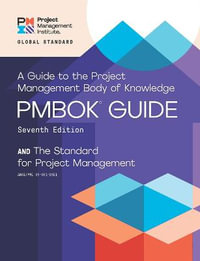| List of Figures and Tables | p. ix |
| Preface | p. xii |
| Acknowledgements | p. xiii |
| List of Acronyms and Abbreviations | p. xiv |
| Introduction to the Book | p. xv |
| Purpose | p. xv |
| Tools and methodology | p. xv |
| Structure | p. xvi |
| Chapters | p. xvi |
| Appendices | p. xvii |
| Glossary of buzzwords | p. xvii |
| Suggested reading and references | p. xvii |
| Information Systems and Organizations | p. 1 |
| Introduction | p. 1 |
| Information systems: A catalogue of failures? | p. 7 |
| Conclusions | p. 12 |
| Exercise | p. 13 |
| What is Systems Analysis and Systems Design? | p. 15 |
| Introduction | p. 15 |
| Basics of a systems analysis and systems design methodology | p. 15 |
| Example of a systems analysis and systems design methodology in action | p. 17 |
| The reductionist | p. 20 |
| The systemic | p. 21 |
| What is the research approach and methodology of this book? | p. 21 |
| Conclusion | p. 24 |
| Exercise | p. 25 |
| The Role of the Systems Planner or Systems Analyst | p. 26 |
| You the analyst: First thoughts | p. 26 |
| The history of the analyst | p. 31 |
| You the analyst: Second thoughts | p. 33 |
| Present reflection and self analysis | p. 33 |
| Reflecting on the development of the analyst | p. 33 |
| Conclusions | p. 37 |
| Exercise | p. 38 |
| Terms of Reference and Selecting our Planning/Development Tools: Sequence and Schedule | p. 39 |
| The reality of analysis: Terms of reference | p. 39 |
| Understanding the information environment: Information audit | p. 40 |
| The context of an analysis methodology: Selecting the right tools | p. 43 |
| The soft systems approach | p. 44 |
| Information modelling | p. 44 |
| Social and technical requirements | p. 44 |
| Human-computer interface | p. 45 |
| Technical aspects | p. 45 |
| Ways of using Multiview | p. 46 |
| Conclusion | p. 49 |
| Exercise | p. 49 |
| What is the Problem? The Human Activity System: Making a Model | p. 50 |
| Introduction to the human activity system | p. 50 |
| The rich picture | p. 52 |
| Preparation | p. 52 |
| The primary components of the rich picture: Structures | p. 54 |
| The primary components of the rich picture: Processes | p. 58 |
| Putting together the rich picture | p. 59 |
| The root definition | p. 67 |
| Introduction | p. 67 |
| Three examples of CATWOE | p. 68 |
| The new system (in concept) | p. 71 |
| Introduction | p. 71 |
| Conceptual model/systems model | p. 73 |
| Conceptual model: Main activities for the information system project | p. 73 |
| Systems model: Main systems involved in the information system | p. 74 |
| Final considerations | p. 78 |
| Conclusions | p. 78 |
| Exercise | p. 79 |
| The human activity system phase | p. 79 |
| On root definitions and systems models | p. 80 |
| Developing a systems model | p. 81 |
| Information Modelling: Making a Workable System | p. 82 |
| Introduction to information modelling | p. 82 |
| Entities, attributes, functions and events | p. 85 |
| Entity models/tables | p. 87 |
| Attributes | p. 91 |
| Functional decomposition | p. 93 |
| Double checking on entities and functions | p. 96 |
| Events | p. 98 |
| Tying it all together | p. 99 |
| Conclusions | p. 99 |
| Exercise | p. 100 |
| Technical Needs, Social Needs: Getting the Right Balance | p. 102 |
| Introduction to socio-technical systems | p. 102 |
| Predict future environment analysis | p. 105 |
| Outline social and technical objectives | p. 107 |
| Social objectives of the proposed information system | p. 107 |
| Technical objectives of the proposed information system | p. 108 |
| Generate social and technical alternatives | p. 108 |
| Rank the alternatives | p. 109 |
| Cost-benefit analysis | p. 111 |
| Tabulate and grade | p. 112 |
| List major factors | p. 112 |
| Human and computer tasks | p. 113 |
| People tasks | p. 113 |
| IT tasks | p. 114 |
| Conclusions | p. 115 |
| Exercise | p. 116 |
| The Human-Computer Interface | p. 117 |
| Introduction to the human-computer interface | p. 117 |
| The nature of the interface | p. 119 |
| Some interfaces | p. 120 |
| The technical interface | p. 120 |
| Social issues | p. 123 |
| Security | p. 125 |
| Considering the technical interface | p. 125 |
| The case study: Specific issues | p. 127 |
| Considering the social interface | p. 130 |
| The case study: Specific issues | p. 130 |
| Considering the security interface | p. 131 |
| The case study: Specific issues | p. 132 |
| Implementing the interface design | p. 133 |
| Conclusions | p. 134 |
| Exercise | p. 134 |
| Technical Aspects: What is Needed? | p. 135 |
| Introduction | p. 135 |
| The application area: What we want to do | p. 137 |
| The case study | p. 139 |
| The database area: The data store | p. 140 |
| The case study | p. 140 |
| The retrieval area: What we want from the system | p. 141 |
| The case study | p. 142 |
| The management area: How to control the system | p. 142 |
| Controlling your system with the operating system | p. 143 |
| Job priority control | p. 144 |
| Security | p. 145 |
| User support | p. 148 |
| The maintenance area: Keeping the system going | p. 149 |
| Preventative maintenance | p. 150 |
| Corrective maintenance | p. 150 |
| The monitoring and evaluation area: Learning about the system | p. 151 |
| Rule of thumb | p. 152 |
| Key indicator | p. 152 |
| The logical framework | p. 153 |
| An issue of risk? | p. 153 |
| Assessing risk value | p. 154 |
| Prioritizing the risks | p. 155 |
| Putting it all together: The technical package | p. 155 |
| Conclusions | p. 156 |
| Exercise | p. 156 |
| The Total Design, Training, Hardware, Software and Implementation | p. 157 |
| Introduction to implementation issues | p. 157 |
| Training | p. 158 |
| The communication of skills | p. 158 |
| Repetition of skills out of the training room context: Self confidence and self reliance | p. 159 |
| Specific training issues to be aware of | p. 160 |
| Software selection | p. 161 |
| Case study | p. 163 |
| Hardware selection | p. 164 |
| Case study | p. 165 |
| Implementation | p. 165 |
| Conclusion | p. 166 |
| The Multiview methodology | p. 166 |
| The learning organization methodology | p. 167 |
| Appendices | |
| Systems analysis and systems design: Methodologies in relation to each other | p. 169 |
| The project cycle: Seeing the task in perspective | p. 172 |
| Some thoughts on answers to the exercises | p. 176 |
| Glossary of Buzzwords | p. 193 |
| Suggested Reading | p. 199 |
| References | p. 203 |
| Index | p. 215 |
| Table of Contents provided by Ingram. All Rights Reserved. |
























